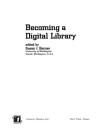The author’s main goal in this book is to introduce the beginning student or pediatric resident to a systematic method of medical decision making. This book is divided into three basic sections: history-taking; physical examination; and medical reasoning. It is important to note that the purpose of this book is NOT to teach everything there is to know about every possible medical diagnosis, but rather to establish a framework for reasoning out a problem. The author assumes that as the learners read about and experience many more encounters over their training period they will be able to apply the facts to this basic framework. Thus, it is important to note that the history-taking and physical examination, first and second sections specifically do NOT mention any diagnoses. Their main purpose is to present the full array of data that needs to be gathered. Note the insertion of several clinical tricks of the trade to help gain accurate data. The third section, medical reasoning will take the reader through the thought process of arriving at a diagnosis. It addresses sifting and winnowing through large amounts of data: interpretation of history, what questions to ask, what questions may or may not be pertinent to the situation at hand, making initial hypotheses and testing them with information from a physical examination. We discuss what to examine based on the history, interpreting the remaining data, re-evaluating hypotheses, re-thinking them and narrowing them further, ideally (but not always) into a unifying hypothesis. If necessary, the author discusses the use of laboratory and imaging as further means to test hypotheses. The author then discusses making treatment plans with the idea forefront in the mind that the hypothesis still may indeed be wrong and have to be revised. The narrowing-down process is critical and necessary for the rational practice of medicine and the techniques are often referred to as "heuristics" (short-cuts). They are most helpful, but are certainly not infallible. The author therefore discusses pitfalls in clinical diagnosis in order to keep the reader keenly aware of the fact that hypotheses are in need of constant review and revision if necessary. This book presents two illustrative and simple cases as journeys through the medical reasoning process. As the learner progresses, he/she will learn to navigate through more difficult cases, However, the more simple cases provide the tools to use for the more complex ones. It is the author’s hope that early on in medical training the learners will appreciate the importance of good histories and physical examinations and how to interpret them. They will find that much of the information gathered in this manner will serve them well and lead to more judicious and appropriate usage of technology to arrive at diagnoses.
Arthur N Feinberg
Pediatric Resident Pocket Guide [PDF ebook]
Making the Most of Morning Reports
Pediatric Resident Pocket Guide [PDF ebook]
Making the Most of Morning Reports
Acquista questo ebook e ricevine 1 in più GRATIS!
Formato PDF ● Pagine 103 ● ISBN 9781634821865 ● Editore Arthur N Feinberg ● Casa editrice Nova Science Publishers ● Pubblicato 2016 ● Scaricabile 3 volte ● Moneta EUR ● ID 7225473 ● Protezione dalla copia Adobe DRM
Richiede un lettore di ebook compatibile con DRM












